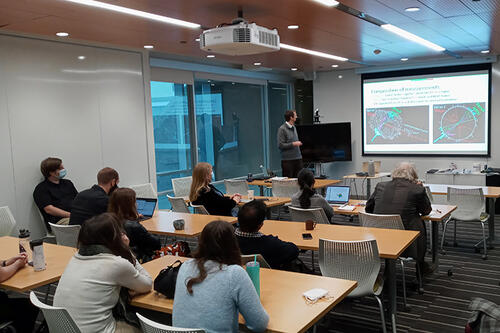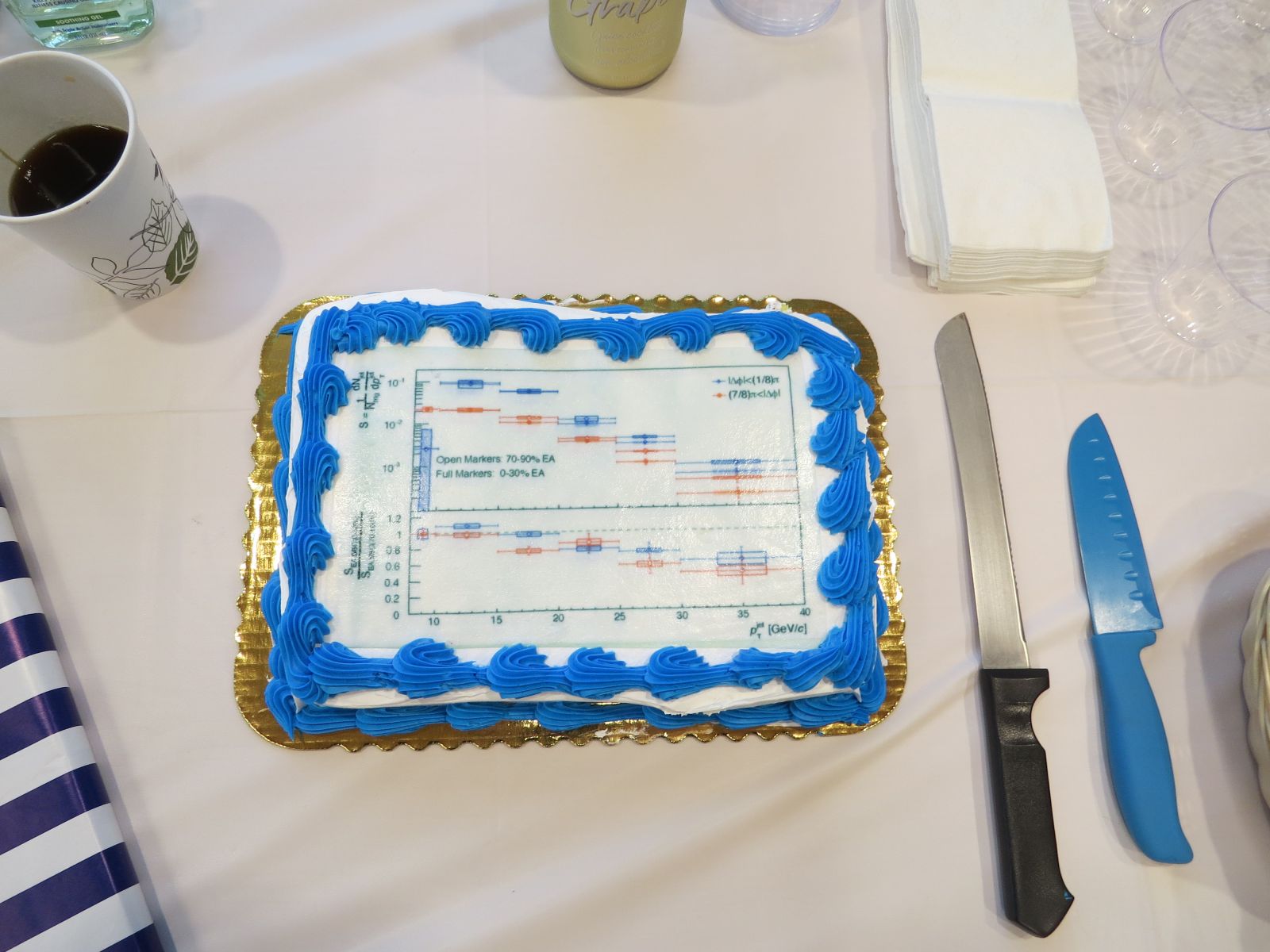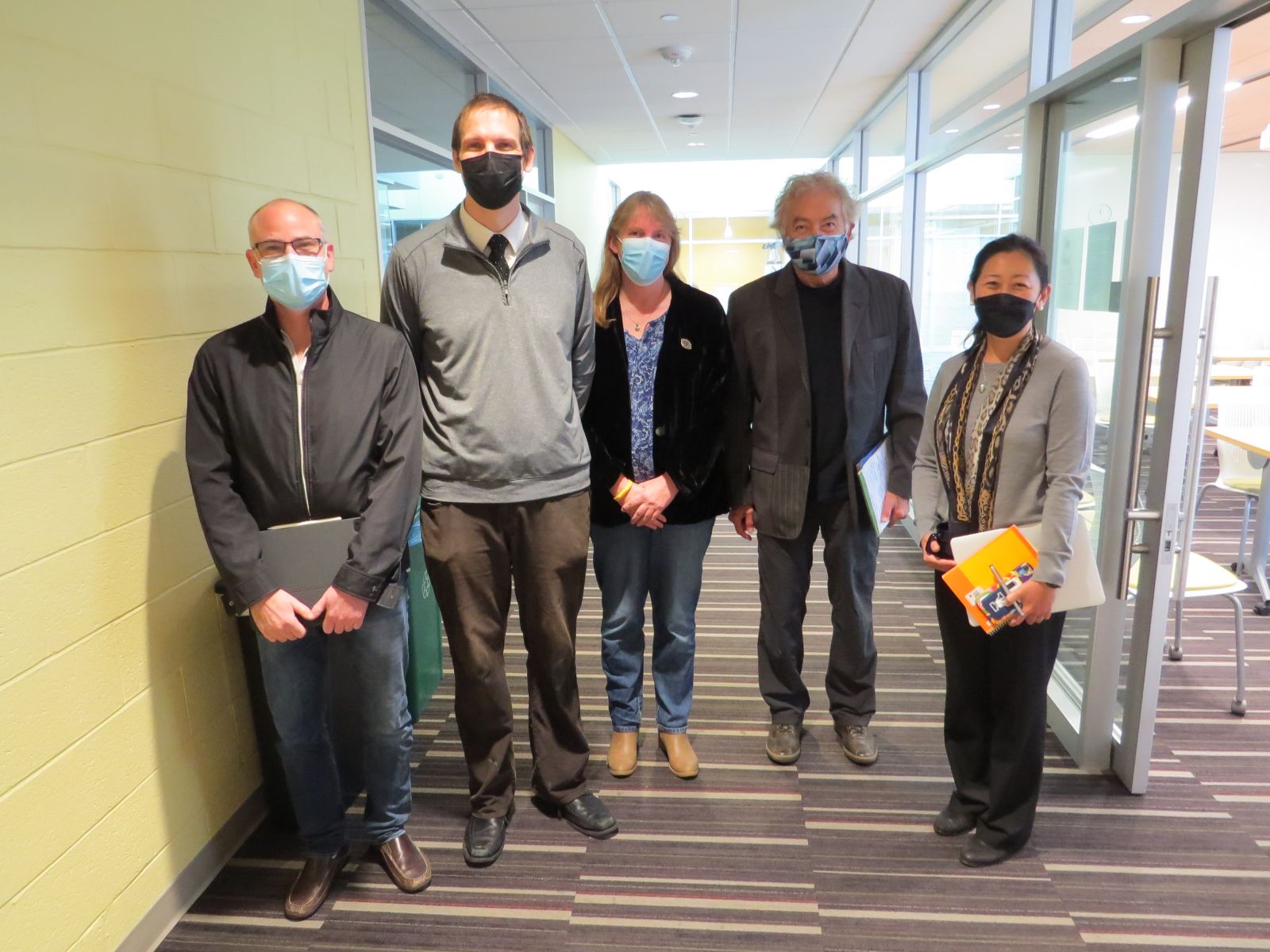
On November 12, 2021, David Stewart successfully defended the thesis: “Jet to Event Activity Correlations in Small System Collisions at STAR”. (Advisor: Helen Caines)
Stewart explained, “My thesis analyzes data from the STAR experiment at RHIC recording collisions of protons and gold atoms which have been accelerated to near the speed of light. The collisions probe the strong force – one of the four known fundamental forces in nature (the others being gravity, electromagnetic, and the weak force). In these collisions rare, high-energy, reactions scatter quarks and gluons (partons). In head-on gold-gold collisions there are so many colliding protons and neutrons that a quark-gluon plasma (QGP) forms and slows down, or “quenches”, many of the scattered partons. Measurements in recent years have raised questions challenging the general belief that small system collisions (such as proton-proton and proton-gold collisions) are too small to form a QGP. My thesis measurements present strong evidence that there is no quenching in proton-gold collisions at RHIC’s kinematics (lower energies than at CERN’s LHC), and that the scattered partons probe the initial configurations and interactions of the colliding particles.”
Stewart will be going to Detroit to take a postdoctoral position for STAR working with Joern Putschke at Wayne State University.
Thesis Abstract: Heavy ion collisions at the LHC and RHIC produce a quark gluon plasma (QGP), in which quarks and gluons are deconfined into an extended medium. This “fourth phase” of matter is also believed to have been the first material phase of the universe following the Big Bang. In experiment, high energy partons scatter at short time scales and may subsequently lose energy, or are “quenched”, via interactions with the QGP. We approximate these high energy partons by “jets,” the combined four-momenta of collimated sprays of final state particles, and use these jets to probe for QGP formation and properties. We present semi-inclusive jet measurements from √sNN = 200GeV proton+gold (p+Au) collisions recorded by STAR at RHIC in 2015, which are the first semi-inclusive jet measurements for small system collisions (p/d/He3+A) at RHIC kinematics . These measurements demonstrate that, within the precision allowed by statistics and systematic uncertainties, there is no jet quenching in these small system collisions. We also present measurements of significant, and previously unexpected, correlations between the semi-inclusive jet momentum spectra and collisional event activity. We demonstrate how these results support the conclusion that correlations between jet formation and EA in small systems offer an opportunity to probe not the QGP, but rather the early initial stages of these collisions.
Additional photos:

